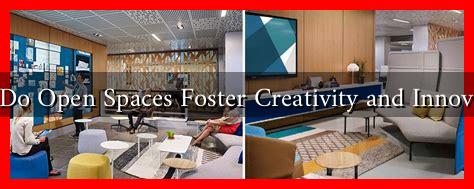-
Table of Contents
How Do Open Spaces Foster Creativity and Innovation?
In an increasingly fast-paced and competitive world, the need for creativity and innovation has never been more critical. Open spaces—whether in urban environments, workplaces, or educational institutions—play a significant role in nurturing these essential qualities. This article explores how open spaces contribute to creativity and innovation, supported by research, examples, and case studies.
The Psychological Impact of Open Spaces
Open spaces have a profound psychological impact on individuals. Research indicates that environments with natural light, greenery, and open layouts can enhance mood and cognitive function. According to a study published in the journal *Environment and Behavior*, individuals working in environments with natural elements reported higher levels of creativity and satisfaction.
- Reduced Stress: Open spaces can lower stress levels, allowing individuals to think more freely and creatively.
- Enhanced Focus: Natural light and fresh air can improve concentration, leading to more innovative ideas.
- Increased Collaboration: Open layouts encourage interaction, fostering a collaborative spirit that is essential for innovation.
Case Studies: Successful Open Space Implementations
Several organizations have successfully integrated open spaces into their environments, leading to increased creativity and innovation. Here are a few notable examples:
- Google: The tech giant is renowned for its open office spaces, which include communal areas, game rooms, and outdoor spaces. This design encourages spontaneous interactions among employees, leading to innovative ideas and solutions.
- Airbnb: The company’s headquarters features open spaces that promote collaboration among teams. The design reflects their core value of community, which is essential for fostering creativity.
- University of Virginia: The university has transformed its campus with open spaces that encourage student interaction and collaboration. Research shows that students in these environments are more likely to engage in creative problem-solving.
The Role of Nature in Creativity
Integrating nature into open spaces can significantly enhance creativity. Studies have shown that exposure to natural environments can lead to improved cognitive function and creativity. A study published in the *Journal of Environmental Psychology* found that individuals who spent time in natural settings performed better on creative tasks than those in urban environments.
- Biophilic Design: Incorporating natural elements such as plants, water features, and natural light into open spaces can stimulate creativity.
- Outdoor Workspaces: Companies that provide outdoor workspaces report higher employee satisfaction and creativity levels.
- Nature Walks: Encouraging employees to take walks in nature can lead to a boost in creative thinking, as evidenced by a study from Stanford University.
Open Spaces in Education: A Catalyst for Innovation
Educational institutions are increasingly recognizing the importance of open spaces in fostering creativity among students. Flexible learning environments that encourage collaboration and interaction can lead to innovative thinking.
- Collaborative Learning: Open classrooms allow for group work and discussions, which can enhance critical thinking and creativity.
- Project-Based Learning: Schools that utilize open spaces for project-based learning report higher levels of student engagement and creativity.
- Community Engagement: Open spaces can serve as venues for community events, fostering a sense of belonging and collaboration among students.
Conclusion: The Future of Open Spaces in Fostering Creativity
Open spaces are more than just physical environments; they are catalysts for creativity and innovation. By reducing stress, enhancing focus, and promoting collaboration, these spaces can significantly impact individual and organizational success. As we move forward, it is essential for businesses, educational institutions, and urban planners to prioritize the design of open spaces that foster creativity. The evidence is clear: investing in open spaces is investing in the future of innovation.
For further reading on the impact of open spaces on creativity, you can explore resources from the NAIOP Research Foundation.


